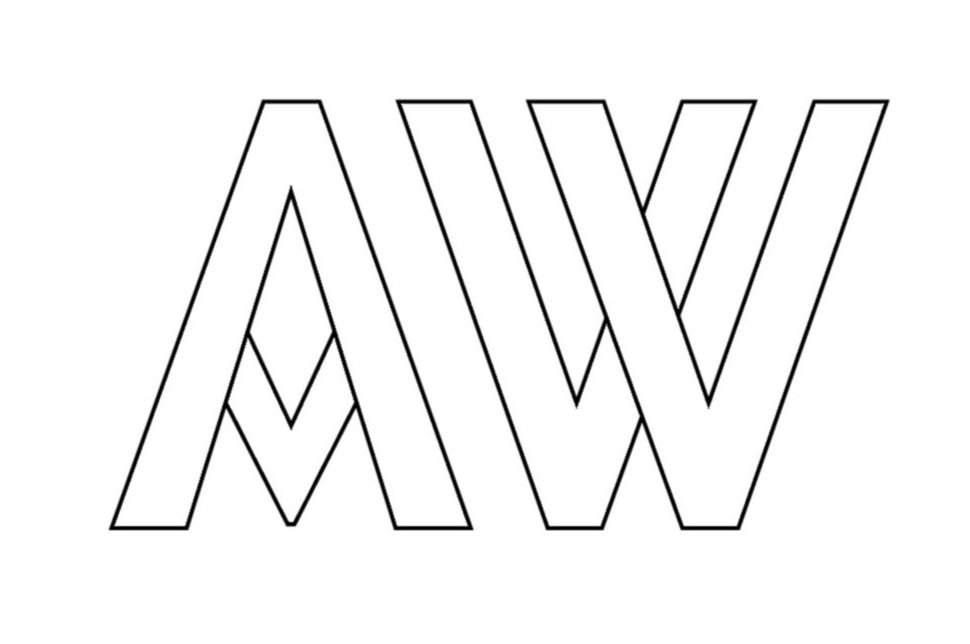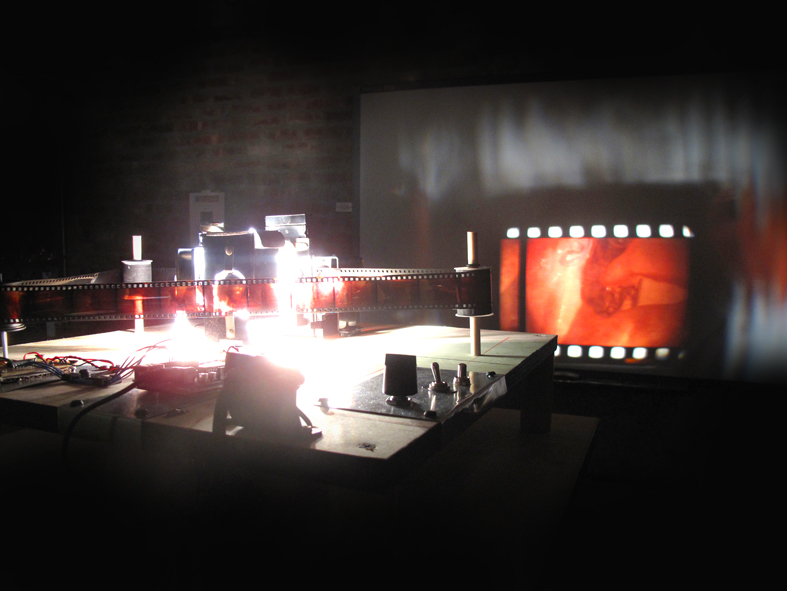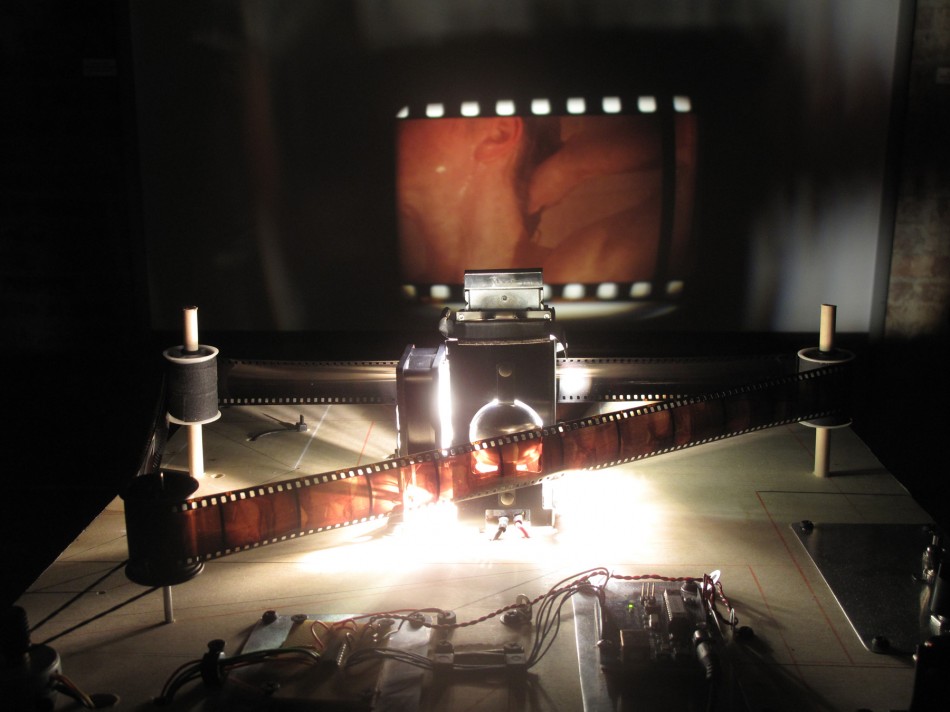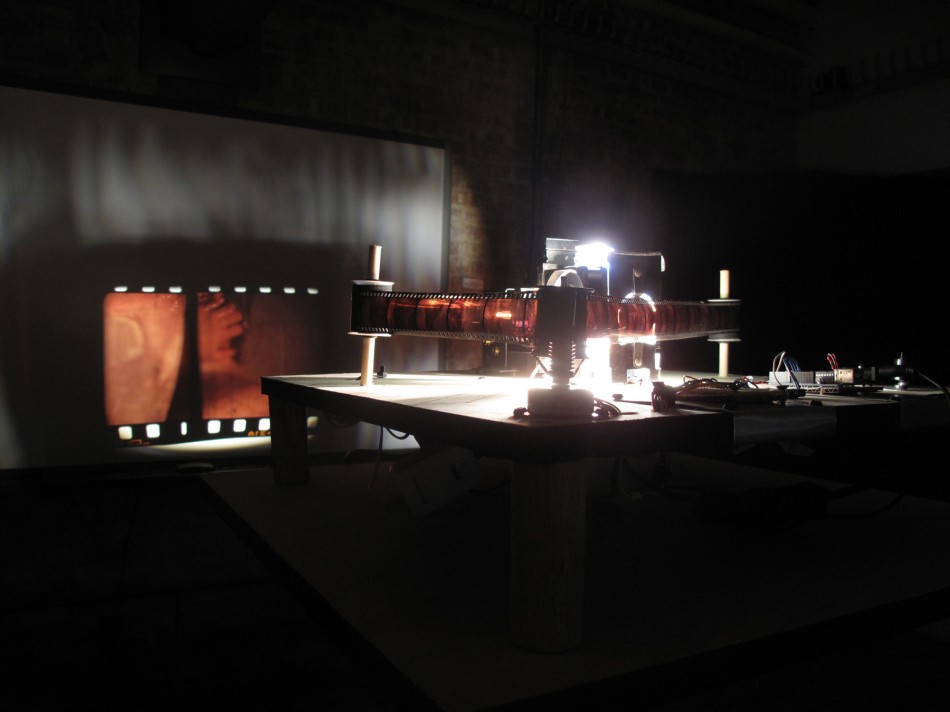2009 – 2010 | INSTALLATION: 35MM FILM, ARDUINO + STEPPER MOTOR, OPTICS AND MIXED MEDIA | VARIABLE DIMENSIONS
The technological drive towards photography and film was pushed by the willingness to preserve the fleeting life and the passing of time in a fixed image. Photography and film allow us to fixate that outline, that silhouette, on a medium, and therefore prevent time from erasing it.
Photography is the compression of the present and the resistant to leave the moment in the past, without ensuring its return. Film captures the moment, fixates it, but at the same time, it takes it out of time turning it into subject of new narratives, endowing it whit a new temporal logic, a new relationship with the autobiographical time.
The photographic process – through which objects loose their corporality and are transformed into images – entails a ghostly transference of the real. And cinema, as Lev Manovich said is “the art of the index; it is an attempt to make art out of a footprint”. Cinema makes present what is absent, therefore, cinema is about illusion, but it is also about the illusion of time, as film temporality lies in its very nature and its narrative unfolds in the present, even though the entire filmic text is prefabricated.
Cinema creates an illusion of movement, as a series of still images appears animated at a determined frame rate.
In the age of digital image it becomes attractive to me to revisit the old cinematic devices to acknowledge the ideas presented before and the tension between the index (film) and the iconic (digital). “The afterimage, or a very slow indexical movement of time” is a different way of rethinking and building the typical film projector, where all its functioning is unfolded, by making visible its mechanism, inverting the position of the film and slowing down its tempo to a point where its resulting projection points out dramatically the illusory aspect of the moving image.
The projector is build out of parts of other projectors and different found objects. It basic look responds to its prototype nature, but also to the simplicity of its mechanism.




